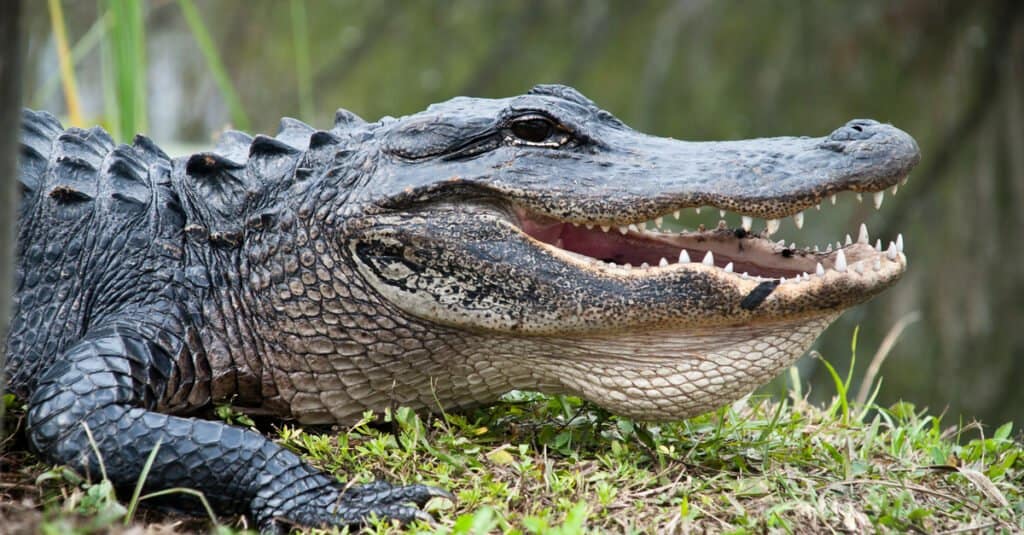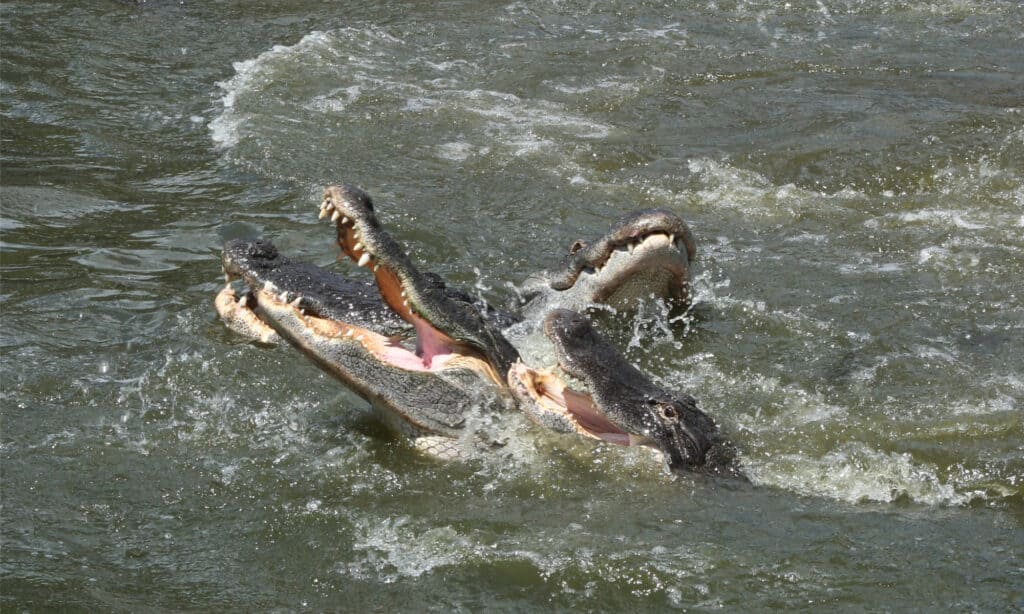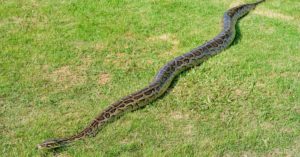You probably have seen alligators either in person or in pictures, and one of the first things you’ll surely notice is their “big” smile. Well, for clarification, these aren’t smiles at all. It’s just that alligators have long mouths from which teeth are fairly visible, letting you easily see their saw-like teeth protruding on both sides of their jaws, accidentally creating an evil grin.
Alligator teeth are surely something to be terrified of. Apart from the fact that these massive reptiles are strong and ferocious hunters and apex predators in the wild, they also have notoriously strong jaws. They possess one of the strongest bite forces in the world, generating around 2,980 PSI. But apart from that, the alligator’s jaw and teeth also help distinguish it from other crocodilian species.
Alligators have an “overbite” and a large, U-shaped snout. In other words, every one of the lower jaw’s teeth can fit inside the upper mandible’s teeth. Seeing the alligator’s seemingly countless teeth, one can’t help but wonder: how many teeth do alligators have? This article will answer that and more.
How Many Teeth Do Alligators Have?

Alligators have 80 teeth.
©Nagel Photography/Shutterstock.com
There are 80 conical-shaped teeth on an adult alligator. Since they lack molars, used for crushing and grinding food, they swallow their meals whole. Alligators are polyphyodont, just like sharks; thus, they regrow any teeth that fall out. In its lifetime, an alligator may lose between 2,000 and 3,000 teeth.
Contrary to crocodiles, which have relatively narrow mouths, alligators have broad snouts. Two rows of teeth, one on top and one on the bottom, run around their mouths like the letter “U” inside their jaws. Except for the fourth tooth from the front, most of their 74–80 teeth are nearly the same size. This fourth tooth is larger than the others and is located roughly where the canine would be in a dog. Alligators are heterodonts, meaning they have multiple tooth types even though they all seem similar.
What Do Alligators Use Their Teeth For?

Alligator teeth are not as particularly sharp as they seem; rather, they are blunt and dull.
©iStock.com/Maryna Rayimova
Alligators chomp down on slick prey like fish and birds with their numerous teeth. However, alligator teeth are not as particularly sharp as they seem; rather, they are blunt and dull. They cannot chew due to their huge jaw muscles and lack of use of their teeth to rip chunks of flesh from large prey.
Unless the alligator chooses to let go, there is no way out once it has anything in its mouth. The rounded teeth come into play here, holding instead of cutting, keeping the prey from running away. Alligators mostly pursue smaller animals that they can swallow whole in a single bite, but they must first catch the prey to devour it.
Alligators often ambush their prey, and once they have found something to eat, they attack and capture them in their teeth. Having one of the world’s strongest bite forces, they typically consume their prey in one bite.
Do Alligators Smile?

As they develop and mature, an American alligator’s teeth and jaws change significantly.
©RICIfoto/Shutterstock.com
The smile is the clearest method to differentiate between an alligator and a crocodile. Crocodiles’ top and bottom teeth protrude above their gums when they close their mouths. On the other hand, only the top teeth are visible when an alligator closes its mouth. Since their lower jaw and teeth completely fit within their upper jaw when their mouths are closed, American alligators can also be recognized visually by the absence of any lower teeth.
But when alligators seal their mouths, where do the bottom teeth go? The bottom teeth of alligators are fitted into unique sockets in their maxillae or upper jaws, and the bottom teeth fit perfectly into the sockets when they close their jaws.
Simply glance at their smile if you’re unsure if you’re gazing at an alligator or a crocodile.
What is an Alligator’s Bite Force?

The bite force of an alligator is 2980 PSI.
©iStock.com/Nigel Stripe
Alligators can generate a whopping 2,980 PSI bite force, ranking them among the world’s strongest bite forces. However, while their closing muscle exerts an amazing PSI number, they have notoriously weak jaw opening muscles that may be readily overcome by simply holding them shut with your hands.
Nevertheless, this stunningly strong bite force still ranks behind its cousin – the crocodile. Saltwater crocodiles have the strongest bite force in the world. Weighing around 1,000 pounds, saltwater crocodiles are the largest members of the crocodile family and the creatures with the most lethal teeth. One of the deadliest animals in the world, saltwater crocodiles kill between 3,000 and 5,000 people annually. To win the gold in the bite force division, a 17-foot crocodile was recorded with a 3,700 PSI biting force. Surprisingly, the same scientist calculated that prehistoric crocodiles reaching 40 feet would have a bite power of 23,000 PSI!
Can Alligators Bite Humans?
Rarely, though, do alligator and crocodile bites occur in the wild. Even though venom is not present in alligator and crocodile bites, they are frequently highly painful and can certainly result in serious wounds.
Most of the time, bites are treated as serious trauma even though they are not venomous. They are known for the high prevalence of soft-tissue infections caused by Aeromonas species (typically Aeromonas hydrophila).
Contact between alligators and people is widespread since they live in the same habitat. Small alligators will only bite if cornered or threatened and would prefer to hide or swim away than face a person. However, large alligators are powerful and dangerous enough to attack and even kill humans, though these occurrences are uncommon.
It is forbidden to feed any wild alligator, so keep that in mind if you come across one in the wild. No matter its size, an alligator should never be approached.
The photo featured at the top of this post is © iStock.com/CoinUp
Thank you for reading! Have some feedback for us? Contact the AZ Animals editorial team.






